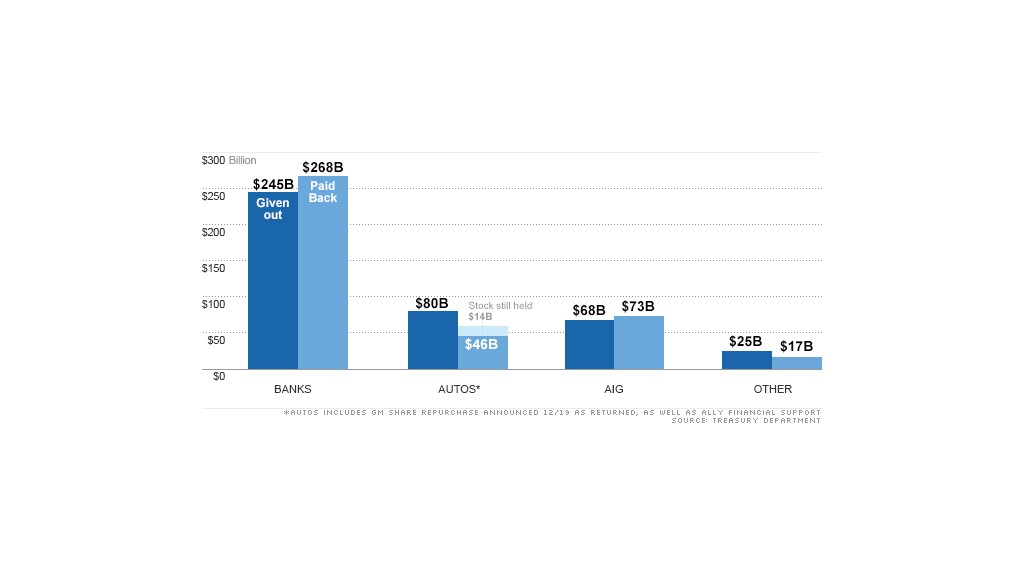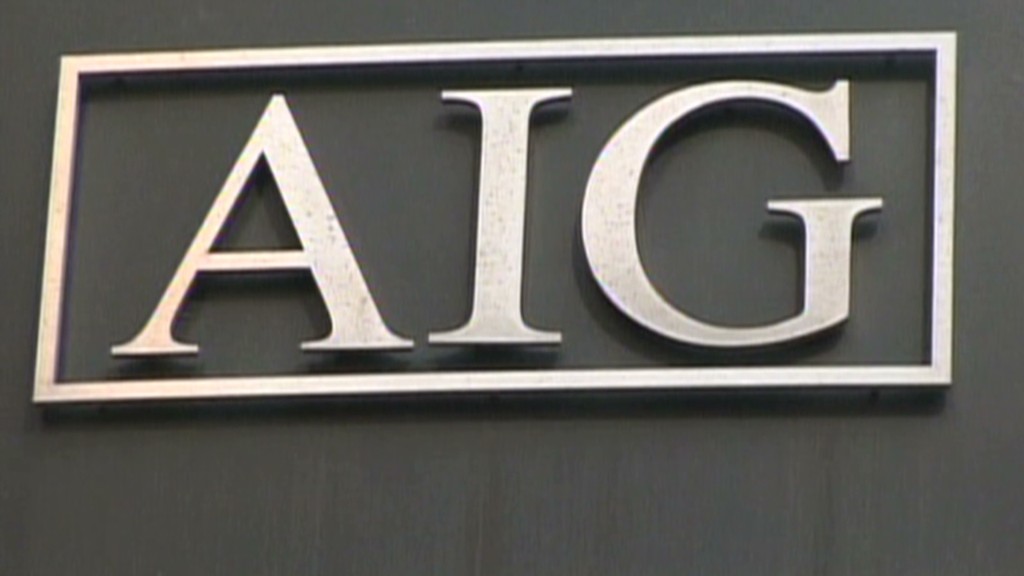
The TARP bailout fund, which pumped nearly $500 billion into the nation's leading banks, automakers and insurers, is getting closer to the break-even point.
The big banks had already paid back their loans, and last week, the Treasury Department sold its remaining stake in AIG (AIG). On Wednesday, General Motors (GM) said it was buying back 200 million shares from the government. Bailed-out companies had also paid nearly $43 billion in dividends and interest over the past four years.
That leaves a loss of just under $14 billion, including $6 billion for programs to prevent foreclosure that were never meant to be paid back.
The shares of banks and automakers that Treasury still owns is likely to fetch close to that much, if not more.
For example, Treasury will still own 300 million shares of GM stock that it plans to sell during the next 15 months. At current prices, the stake alone is worth more than $8 billion.
The Treasury also owns a 74% stake in Ally Financial, as well as $5.9 billion in preferred shares. While the exact value of those holdings isn't known because Ally shares are not publicly traded, the holdings could easily top the $6 billion gap still remaining after GM.
Though Treasury no longer owns shares in the nation's biggest banks, it still holds stakes in 213 small banks that have been unable to raise the capital they need to repay taxpayers. Treasury expects to sell its holdings in about two-thirds of those banks in 2013.
Related: Three answers to the auto bailout debate

Not everyone thinks TARP should be counted as this close to break-even. One issue is how to count dividends and interest. The Special Inspector General for TARP does not include them, arguing those payments were owed for use of the bailout funds.
The TARP watchdog also doesn't count $17.6 billion from the sale of AIG shares that Treasury got from the Federal Reserve.
Related: Too early to call AIG bailout a success
Neil Barofsky, the original Special Inspector General and a critic of the bailout, acknowledges that a lot of money has been paid back. "I'm pretty agnostic as to what should be counted [as a profit or loss]," he said. "But it seems like under almost any of the official estimates, the loss will be much smaller than anyone thought in 2009."
Even so, he argues the bailout failed at its mission of getting banks to loan out money they received, and helping to stabilize the battered housing market.
Even if taxpayers break even on TARP, it wasn't the only bailout to consider.
The largest was $187.5 billion for mortgage finance firms Fannie Mae and Freddie Mac. Even with the $50.5 billion in dividends, taxpayers are still out $137 billion from that rescue.


